Each time the victim of sexual violence gets asked what they were wearing, it heartlessly implies that he or she was responsible for the assault and could have prevented it. Victim blaming drives responsibility away from a perpetrator and puts it on the victim’s shoulders. To fight against the myth that sexual assault could be prevented by the victim alone, art exhibit displaying what victims were wearing during the assault was created.
More info: sapec.ku.edu | twitter.com
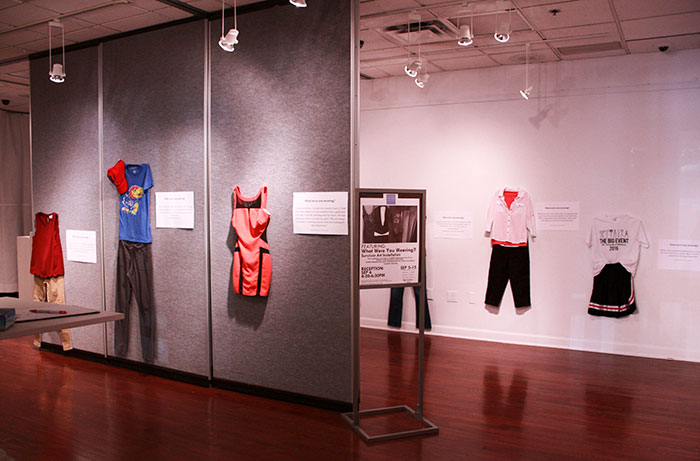
The idea to create such exhibition was born after Dr. Wyandt-Hiebert and Ms. Brockman, sexual violence and intimate partner violence survivor advocates, attended a conference and read a poem “What I Was Wearing” by Dr. Mary Simmerling’s, for the first time. They were touched by it and decided to create the poem’s visual representation. The advocates came up with survivors art installation called “What Were You Wearing?”. The first installation was held at the University of Arkansas in 2014. Students of the university participated by sharing brief descriptions of what they were wearing when they were sexually assaulted. The intent of the installation was to show people that changing one’s clothes will not stop sexual violence.
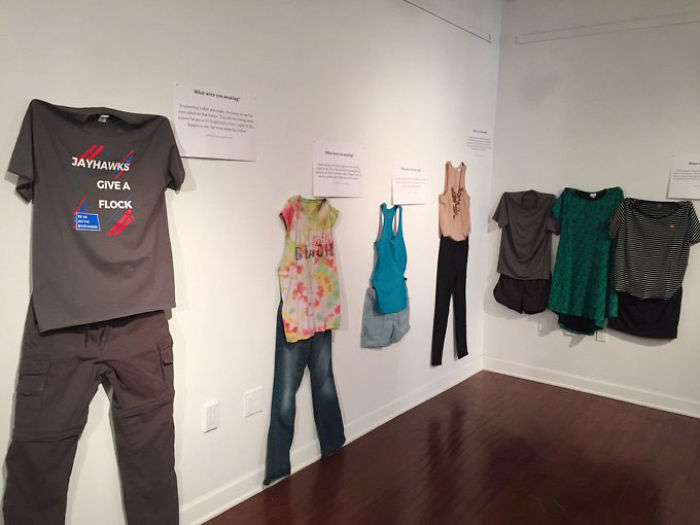
The idea of this installation caught on. Since it was first displayed 5 years ago, “What were you wearing” traveled from one university campus to another. It has also inspired other similar installations and prompted a conversation about the problem of victim blaming. Scroll below to see some of the exhibits from this installation.
“What Were You Wearing? is an installation created to educate people that clothing doesn’t cause sexual assault
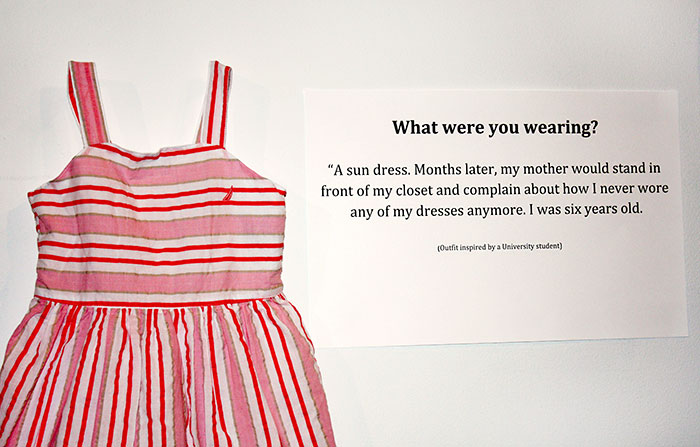
“A sun dress. Months later, my mother would stand in front of my closet and complain about how I never wore any of my dresses anymore. I was six years old.”
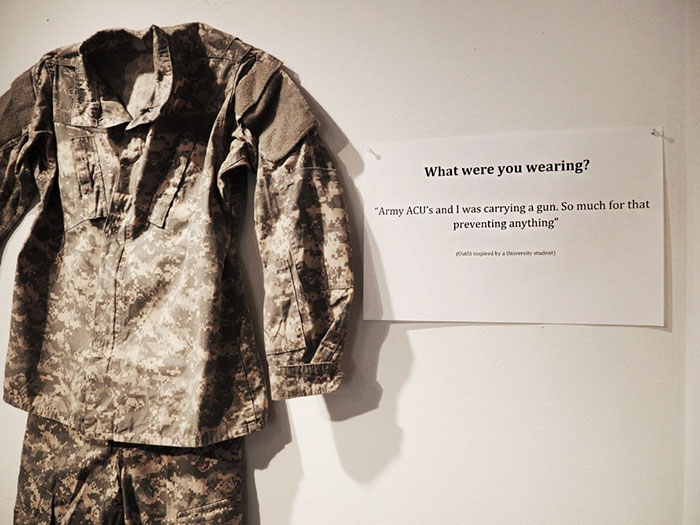
“Army ACU’s and I was carrying a gun. So much for that preventing anything”
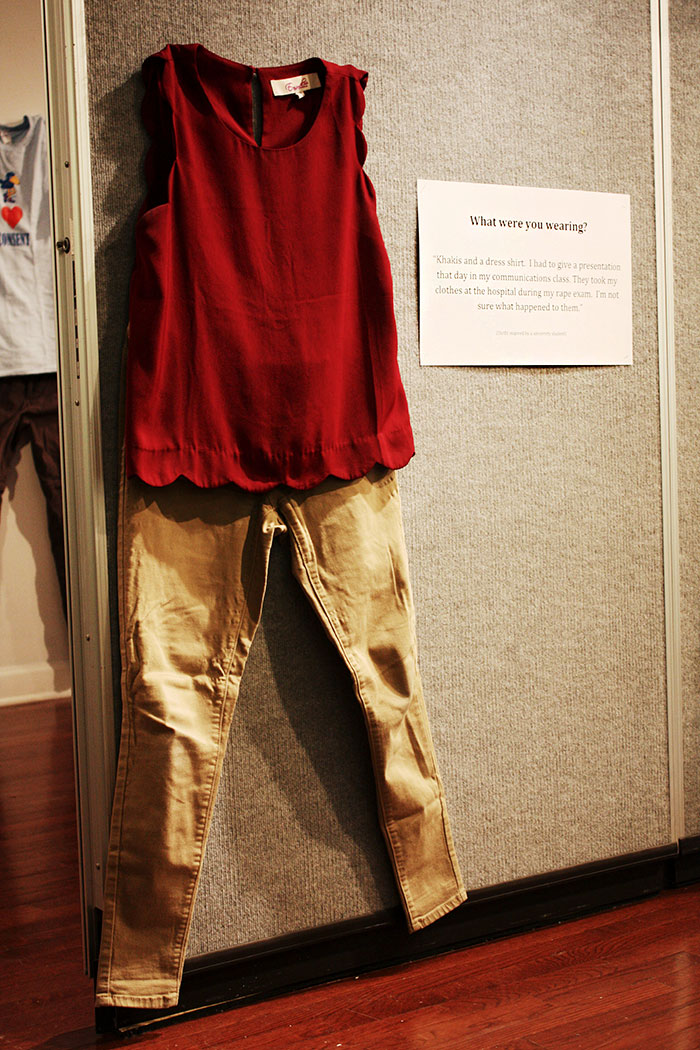
“Khakis and a dress shirt. I had to give a presentation that day in my communications class. They took my clothes at the hospital during my rape exam. I’m not sure what happened to them.”
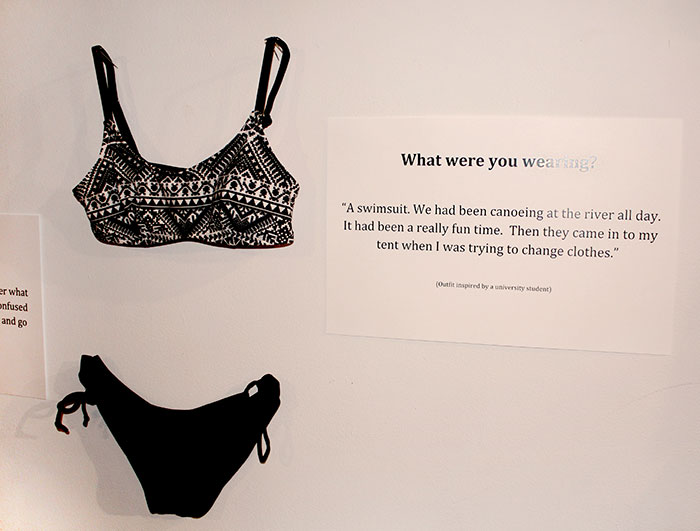
“A swimsuit. We had been canoeing at the river all day. It had been a really fun time. Then they came in to my tent when I was trying to change clothes.”

“My favorite yellow shirt, but I don’t remember what pants I was wearing. I remember being so confused and just wanting to leave my brother’s room and go back to watching my cartoons.”
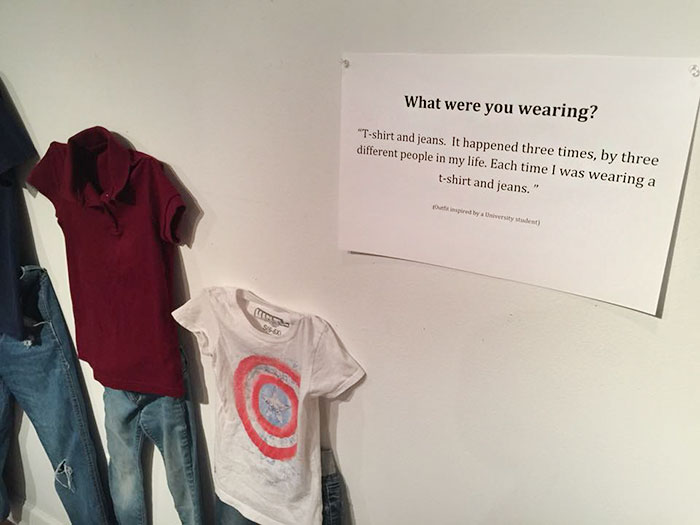
“T-shirt and jeans. It happened three times, by three different people in my life. Each time I was wearing a t-shirt and jeans.”
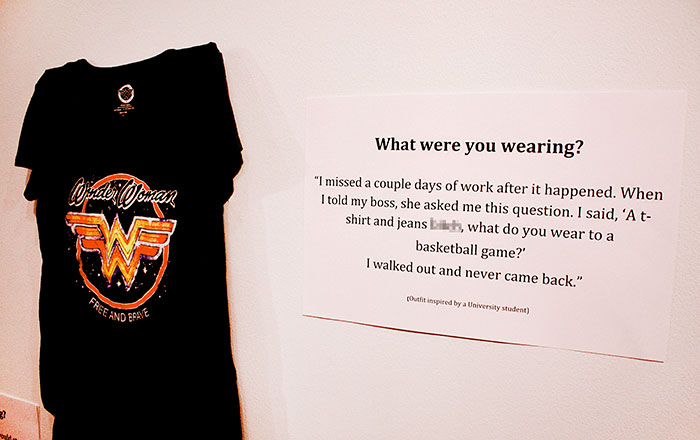
“I missed a couple days of work after it happened. When I told my boss, she asked me this question. I said, ‘A t-shirt and jeans, what do you wear to a basketball game?’ I walked out and never came back.”
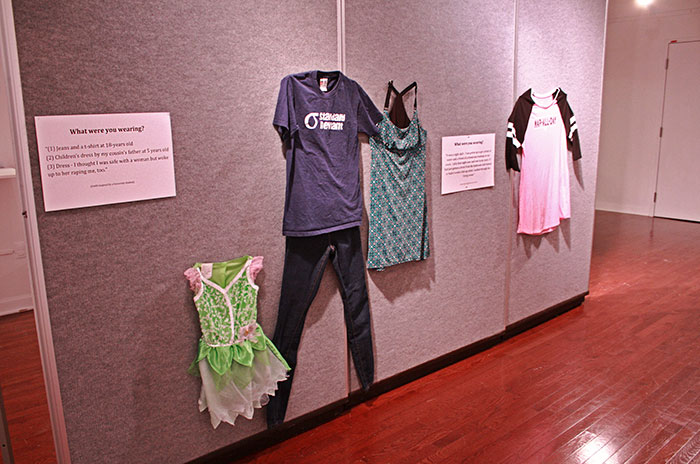
“(1) Jeans and a t-shirt at 18-years old. (2) Children’s dress by my cousin’s father at 5 years old. (3) Dress – I thought I was safe with a woman but woke up to her raping me, too.”
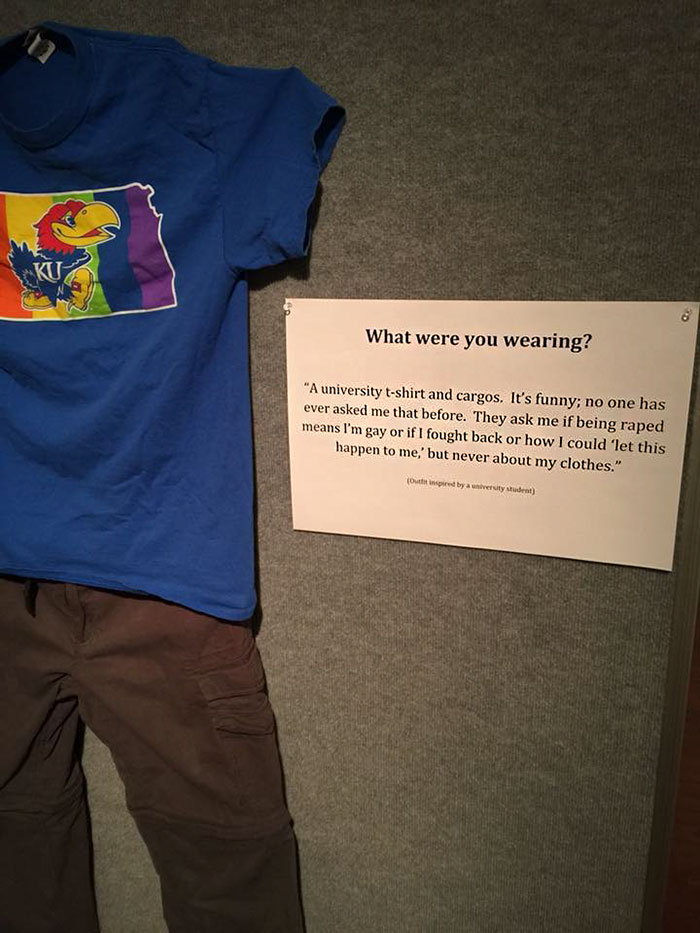
“A university t-shirt and cargos. It’s funny; no one has ever asked me that before. They ask if me being raped means I’m gay or if I fought back or how I could ‘let this happen to me,’ but never about my clothes.”
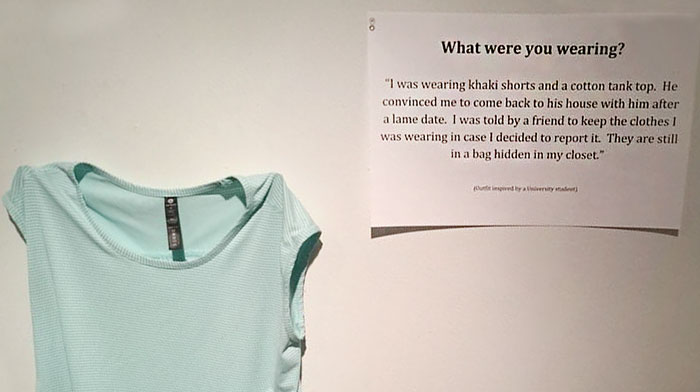
“I was wearing khaki shorts and a cotton tank top. He convinced me to come back to his house with him after a lame date. I was told by a friend to keep the clothes. I was wearing in case I decided to report it. They are still in a bag hidden in my closet.”
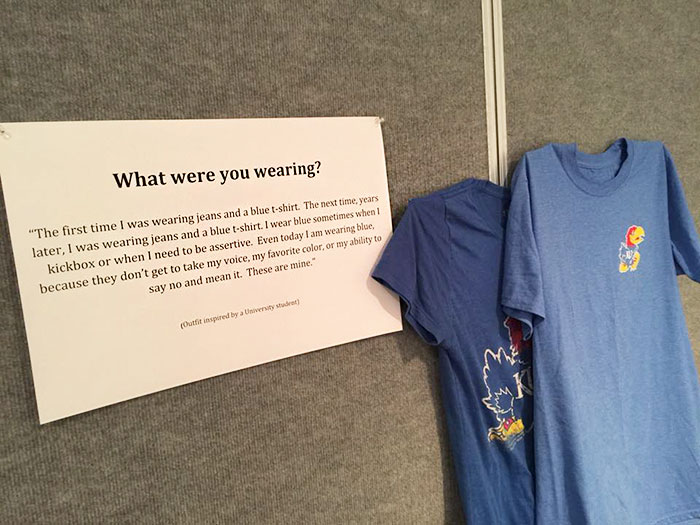
“The first time I was wearing jeans and a blue t-shirt. The next time, years later, I was wearing jeans and a blue t-shirt. I wear blue sometimes when I kickbox or when I need to be assertive. Even today I am wearing blue because they don’t get to take my voice, my favorite color, or my ability to say no and mean it. These are mine.”

“I was wearing jean shorts and a tank top. He wouldn’t let me out of his car until he finished. As soon as I got home, I threw that shirt in the trash.”
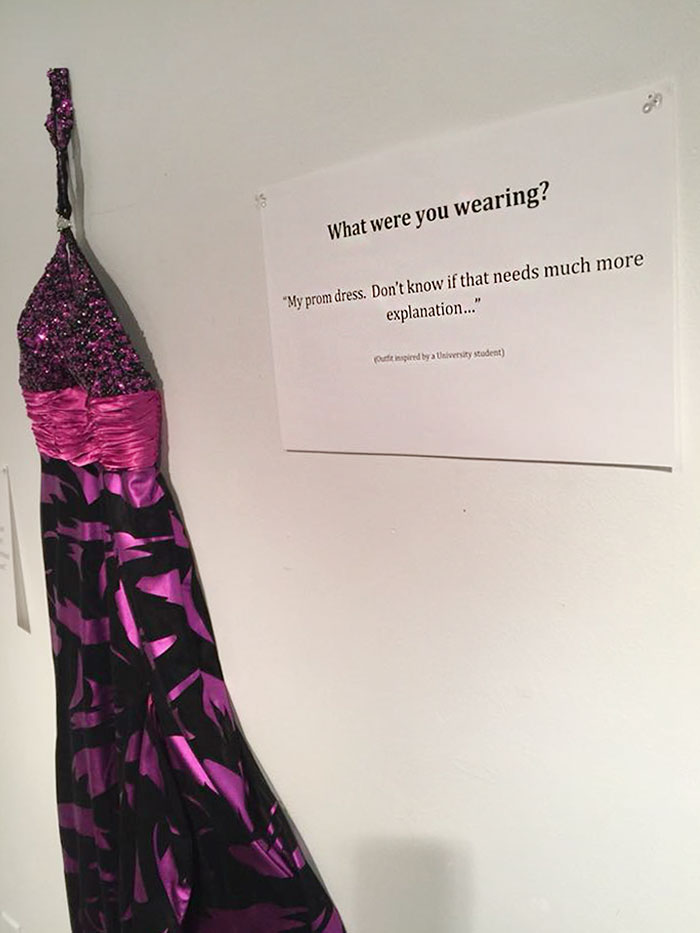
“My prom dress. Don’t know if that needs much more explanation…”
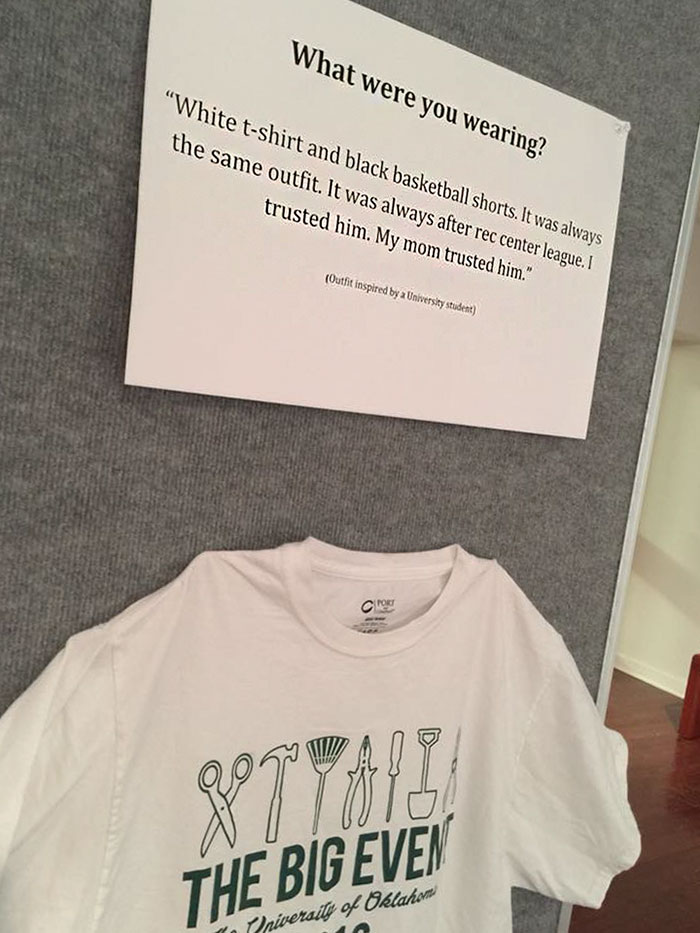
“White t-shirt and black basketball shorts. It was always the same outfit. It was always after rec center league. I trusted him. My mom trusted him.”
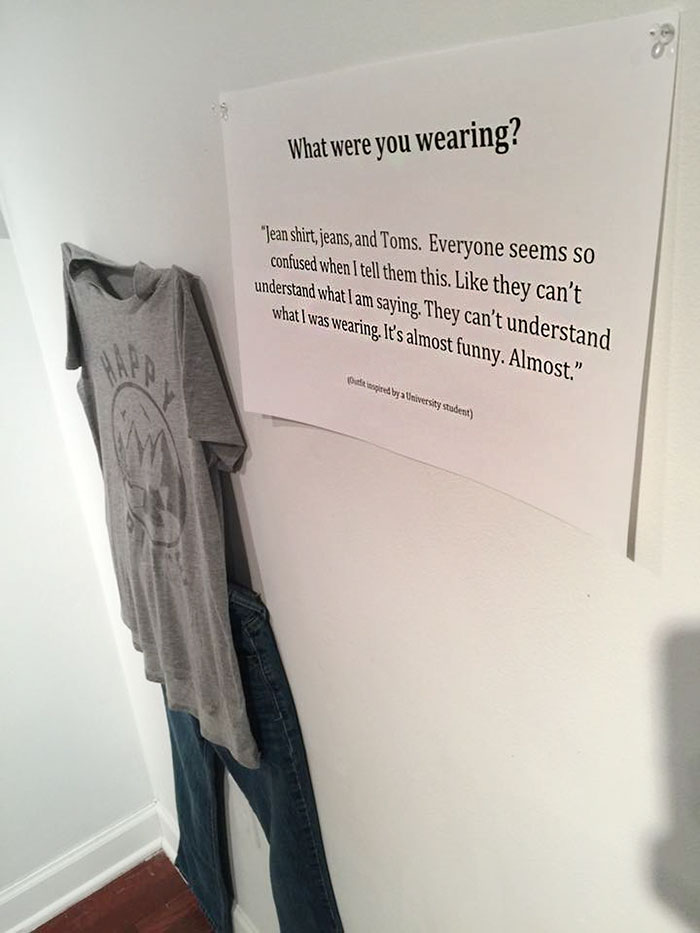
“Jean shirt, jeans, and Toms. Everyone seems so confused when I tell them this. Like they can’t understand what I am saying. They can’t understand what I was wearing. It’s almost funny. Almost.”

“I was wearing a sari. The same thing I wear most days. It was what I was comfortable in. It reminded me of home, of my family, of my identity. Now it reminds me of him.”
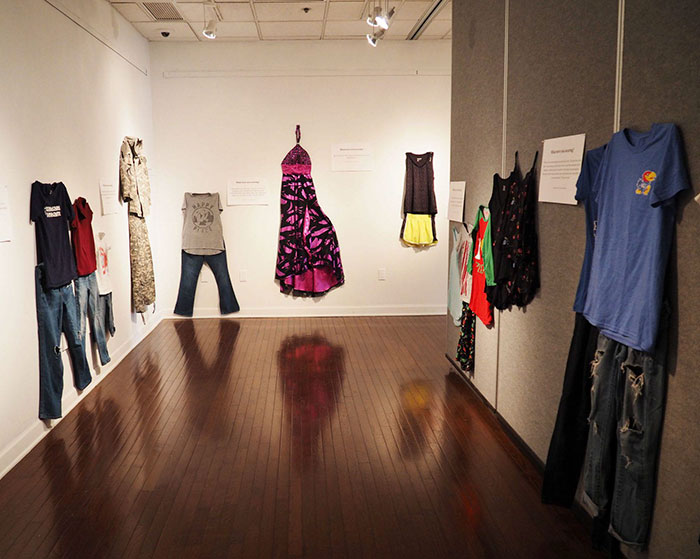
by Andželika via Bored Panda - Source

No comments: